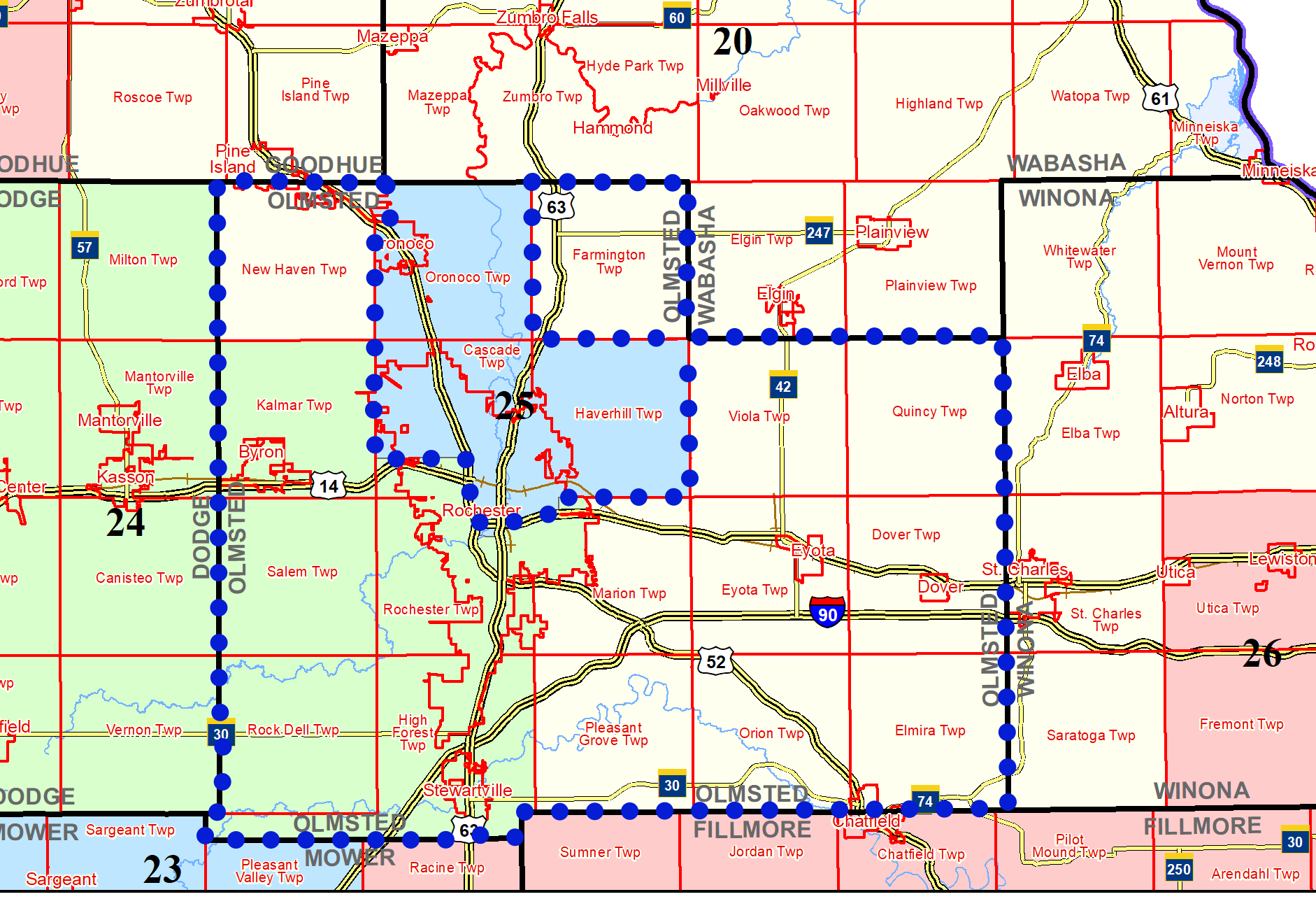Olmsted 20/24 DFL is an organizing unit of the Minnesota Democratic-Farmer-Labor Party that covers the Olmsted County portions of Senate Districts 20 and 24. The purpose of our organizing unit is to elect candidates to public office who represent our shared values.
-
The Minnesota Democratic-Farmer-Labor (DFL) Party was created on April 15, 1944, after the Minnesota Democrats merged with the Farmer-Labor Party. Hubert H. Humphrey was instrumental in the merger and is considered by many to be the founder of the Minnesota DFL Party.
The DFL’s story first began during the 1920s, when representatives of the Nonpartisan League in Minnesota entered candidates for state election under the Minnesota Farmer-Labor Party. The party’s platform consisted of progressive agrarian reform, the protection of farmers and union workers, the public ownership of railroads, utilities, and natural resources, and social security legislation.
The party earned popularity and legislative legitimacy, even gaining victories in Minnesota State and Congressional elections over candidates of the two major parties. From 1921 to 1941, constituents elected three governors, four U.S. senators, and eight U.S. representatives under the affiliation of the Minnesota Farmer-Labor Party. On April 15, 1944, the party united with the Minnesota Democratic Party to form the Minnesota Democratic-Farmer-Labor Party.
The first DFL governor, Orville Freeman, was elected in 1954. Since then, the DFL Party has earned majorities in the state House and Senate, elected some of our nation’s most respected officials to the U.S. House and Senate, and put DFLers in the White House with Vice Presidents Hubert H. Humphrey and Walter Mondale.
For eighty years, the Minnesota DFL has worked tirelessly to enact progressive policies and provide a platform for those who need it the most. We believe that every Minnesotan has a right to stable employment with fair wages, to a proper education, to raise and provide for a family, to accessible and affordable healthcare, to live in safe communities, and to retire with dignity and security. We have made a lot of progress over the course of our party’s history, but there is still much more to do to ensure no one is left behind. Together, we will continue to build an even better Minnesota for all Minnesotans.
-
Traditionally, the boundaries of organizing units, which do the day-to-day work in the DFL in greater Minnesota, followed county boundaries. Historically, Olmsted County was an cohesive organizing unit as SD26. However, DFL rules do not permit this when there are more than three House districts entirely within a county. That happened in Olmsted County with the 2012 redistricting, when we went from an Olmsted County DFL to two units: Senate District 26 DFL and Olmsted-25 DFL (which included the rest of the county outside Senate District 26). In the 2022 redistricting, Olmsted County was divided into three Senate Districts. Senate District 25 is entirely within the county, so it became an organizing unit. The rest of the county became the other organizing unit and was designated Olmsted 20/24 DFL. Much of what had been in Senate District 26 is now in Olmsted 20/24 DFL, though it is now the smaller organizing unit in the county.
Olmsted 20/24 DFL does the day to day work of the DFL party in its area. This includes operating the Rochester DFL office, organizing at the precinct or township level, communicating to people in its area, being involved in community events such as parades and fairs, putting on DFL-sponsored events, raising money to support our operations, and trying to get underrepresented groups involved in the DFL. We often do these things in connection with Senate District 25 DFL, the other organizing unit in Olmsted County. We are led by elected officers, directors, and chairs of precincts and townships, who meet monthly as a Central Committee.
-
The DFL holds precinct and township caucuses every two years to start its candidate endorsement process. At caucuses, which are held in sites, often schools, within the community, those attending will elect DFL precinct or township officers and delegates to the unit convention(s), then discuss and vote on resolutions that their fellow DFLers in the caucus are proposing. Resolutions approved in caucuses go on to the organizing unit convention for further discussion and another vote. These are usually held in February of even years.
The organizing unit convention, usually held in March or April of even years, elects the unit’s officers and directors, elects delegates and alternates to the 1st Congressional District and state DFL conventions, elects members and alternates to the Minnesota DFL Central Committee, votes on proposed revisions to the unit’s constitution, and discusses and votes on resolutions sent to it from caucuses. Resolutions approved at the convention are sent to the state DFL convention for its consideration.
When legislative district boundaries cross county lines, candidate endorsements are managed by DFL endorsing units that cover those districts. For us, those are Senate District 20 and 24 DFLs. The delegates for these endorsing units are elected at their precinct or township caucuses. Those units put on conventions every two years to endorse candidates for the Minnesota House and for the Senate in years when there are Senate elections.
DFL Congressional District units have conventions in even years primarily to endorse a DFL candidate for Congress. The conventions also elect people to party positions at Congressional District, state or national levels.
The state DFL convention, held in May of even years endorses DFL candidates for statewide office and elects people to party positions at state or national levels.
Minnesota has a presidential primary every four years run by the Minnesota government, not by either party, to determine which candidates get delegates to the party’s national convention. The people who serve as those delegates are selected in party conventions, however.
-
For detailed information about your voting units and polling locations, enter your address at:
https://www.sos.state.mn.us/election-administration-campaigns/data-maps/minnesota-senate-maps/


